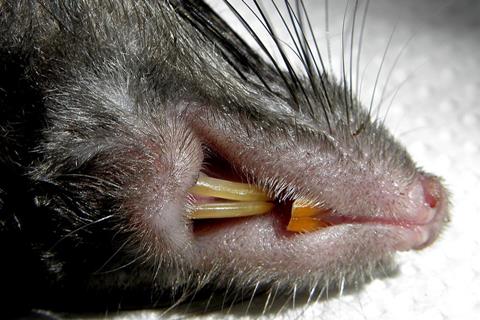Invasive species cause environmental mayhem when they establish themselves in a new ecosystem. But these interlopers can also impact human health directly. Deadly diseases can jump from animals to humans, as the COVID-19 pandemic vividly illustrated.

A new study led by researchers at UC Santa Barbara, University of Réunion and Duke University reveals that the black rat is likely responsible for transmitting the deadly hantaviruses in rural Madagascar, where forested landscapes have been converted to agriculture and settlements. The results appear in the journal Ecology and Evolution.
READ MORE: Researchers find live hantavirus is carried in various New Mexico small mammal species
READ MORE: Finnish vole fever on the march further south
Rats have been familiar denizens of human settlements since time immemorial. They’ve lived in our towns and cities, shared our crops and leftovers, and accompanied us on nearly all of our voyages. And their ability to transmit diseases is well known. The black rat, Rattus rattus, originated in southern Asia, and likely migrated into Europe along the spice trade, and from there to the rest of the world, arriving in Madagascar between the 10th and 14th centuries.
Unique hantaviruses
Disease ecologists were curious about which species in Madagascar could transmit Hantaviruses and how human land use impacted the number of infected animals across the landscape. Hantaviruses are a group of viruses that can cause potentially deadly illnesses. The pathogens mainly spread to people via exposure to rodent urine and feces.
“We were particularly interested in hantaviruses here because Madagascar has unique hantaviruses that are not well studied,” said co-lead author Kayla Kauffman, a doctoral student in Professor Hillary Young’s lab at UCSB. There’s also extremely high evidence of past exposure in Malagasy people.
The authors engaged with communities living alongside the boundary of Marojejy National Park, in northeastern Madagascar. Community members allowed the team to trap small mammals and bats in their homes and fields, which included agroforests where vanilla is grown, hillside crop fields and flooded rice fields. They also obtained permission to trap animals in the rainforest located just inside the boundary of the national park.
Black rats
The team collected samples from nearly 2,000 animals, which they shipped to their lab in La Réunion to be tested for the presence of hantavirus. They sequenced the viral genome in samples that came back positive to determine how related the viruses were between animals in the study, as well as to other hantaviruses globally. The sequencing results will help determine the origins of hantavirus in Madagascar in future work. Models helped the authors track different factors — like location, sex, weight and age — to see how they correlated with the likelihood an animal was infected.
After taking samples from 17 species of small mammal and 11 species of bat, the team found the virus exclusively in rats. “We were surprised to find that only black rats were infected with hantaviruses because the other non-native species of small mammals are commonly infected in other parts of the world,” Kauffman said.
Agricultural fields
Larger, adult rats were more likely to be infected and were more commonly trapped in agricultural lands than inside people’s homes. “This means that people are less likely to be exposed to the virus at home than in their fields,” Kauffman added.
What’s more, while many rats in the agroforests carried the disease, not one of the rats captured in the rainforest was infected. These findings demonstrate how human land use impacts infection in these animals, and in turn human exposure to this virus.
This research project, funded by the National Institutes of Health and Duke University, connected scientists from around the world with diverse specialties, including disease ecology, social sciences and veterinary health. Over the last eight years, the international team has studied zoonotic pathogens in wildlife, domestic animals and people, comparing how pathogen prevalence and human exposure vary among animals across native and highly disturbed landscapes.
The authors are currently dating the introduction of hantavirus to Madagascar using the samples from this and other studies in the country. They also plan to further investigate how habitat fragmentation and human land use impact small mammals and the parasites they carry.







No comments yet